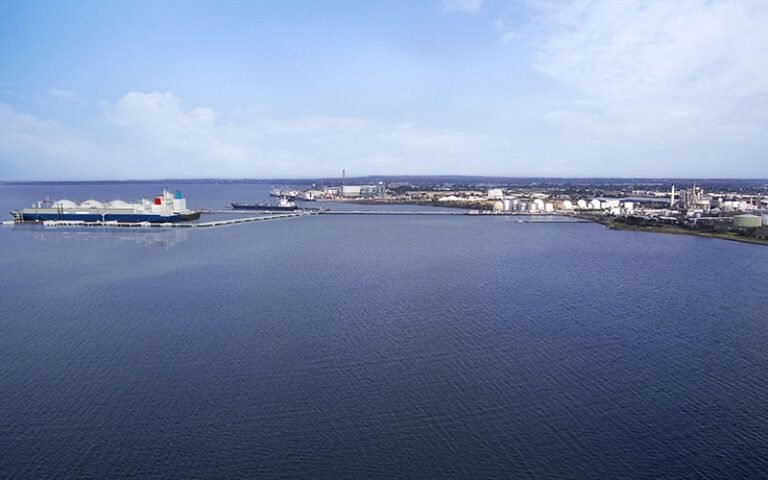Australian Energy Infrastructure Player Viva Energy Receives Environmental Permit for LNG Terminal Project in Geelong
Australian energy infrastructure player Viva Energy has received the environmental permit for its proposed liquefied natural gas (LNG) terminal project in Geelong, Australia.
Thanks to the positive assessment on the environment effects statement (EES) from Australia’s Victoria State Government and Planning Minister Sonya Kilkenny, Viva can proceed with its LNG terminal project, subject to certain conditions. The terminal is expected to play a crucial role in ensuring the stability of gas supply in south-eastern Australia.
Key Infrastructure Details
The new infrastructure entails an extension to Geelong refinery jetty, a permanently moored floating storage and regasification unit (FSRU), and a seven-kilometer pipeline connecting it to the state’s gas main. Three kilometers of the pipeline are planned to be located on the pier and refinery land, and four underground and within existing pipeline corridors.
Viva Energy’s gas terminal would have the capacity to supply over 120 petajoules of gas per year and introduce a peak supply of up to 750 terajoules per day to meet the daily and seasonal gas demands of Victoria and southern Australia.
Benefits of the LNG Terminal
According to the Australian player, the terminal will enable the Victorian market to connect to significant supply sources in northern Australia, boosting energy security. It is also projected to unlock a pathway to bring LNG from Australian gas fields or abroad, effectively acting as a virtual pipeline.
“Viva Energy’s gas terminal in Geelong is a transformative development for Victoria’s energy landscape, which will ensure a secure, flexible, and cost-effective gas supply, supporting renewable energy generation, and contributing to the economic well-being of Australia,” said Viva Energy Chief Strategy Officer Lachlan Pfeiffer.
Future Plans and Expansion
Pfeiffer added that his company would now work to lock in large-scale gas market participants in order to firm up the business case for a final investment decision (FID) on the project. Viva sees the future gas terminal as an important component of its Viva Energy Hub, which incorporates the Geelong refinery, strategic fuel storage, a green hydrogen refuelling station, and has plans for co-processing low-carbon liquid fuels.
Since the Geelong refinery supplies more than 50% of Victoria’s fuel needs, and the gas terminal’s capacity will be enough to supply more than 60% of the State’s gas needs, Viva believes the Energy Hub will become a gateway to deliver Victoria’s energy requirements, a driver of the economy, and a center for high-skilled jobs in the energy sector.
Conclusion
This significant milestone for Viva Energy sets the stage for the development of a critical piece of energy infrastructure that will not only enhance energy security but also support the transition to renewable energy in Victoria. With construction likely to commence in the second half of 2026, the LNG terminal project in Geelong is poised to make a substantial impact on the energy landscape of Australia.

